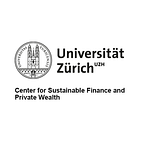FAIL — First Attempt In Learning
What Celebrating Failed Investments Can Teach Us
Trying to bring about change is not easy. Especially when operating in a rapidly developing field like impact investing. Learning hurts and failure is a natural part of the process of finding one’s way as a sustainable investor. But how to not let the fear of failure stifle courageous decision-making? How to move forward when hard-worked plans and long-term dreams collapse? In order to share experiences from their uphill journeys, alumni from the IRI/CSP Impact Investing for the Next Generation program gathered for a Fail Fest to celebrate their first attempts in learning.
“Failed investments are part of being an investor. Even if an investment fails, this does not mean that failure is total. We should not be afraid to talk about challenges nor failures. That is the only way to make the most out of them,” a participant begins.
“I don’t think there necessarily is a single way to deal with failed investments. The important thing is that we don’t look at failure as an endpoint, but rather as a stepping stone. We should not be scared away by it, but rather embrace it and learn from the experience,” another participant argued as referring to an investment that had demanded extensive preparatory work yet failed nonetheless. “The investments did not turn out as expected. But the thing is: I already put in the groundwork and was able to use much of that work in a different investment. Because of using the processes already in place, I was able to move forward with the other investment faster,” he continued. Re-using already established work, especially when dealing with investments in similar industries, ensures that one does not start from zero when moving forward on the journey.
What does failure even mean? According to researchers at the Harvard Business School, 30–40% of start-ups fail. When including companies that do not deliver on the projected return of investment to the assessment, the number rises to 75%. It is worthwhile to note that these figures refer to traditional investing. When operating in the untrodden paths of impact investing, the risk of failure when assessed only in monetary terms is just as high.
With the figures in mind, a case shared by one of the participants was nothing out of the ordinary, yet painful nonetheless. “One of our investments in the aviation sector failed miserably. We worked on it for a long time and the whole family was involved,” the participant recounted. The effects of the failure thus stretched beyond practical questions and tilted family relations off balance too.
“We have very specific processes in place. First of all, we have clear definitions of failure, and what needs to be achieved for success. We always strive to have the whole team behind an investment, and we make sure that everyone is on board before making final decisions,” a senior investor commented. “This is especially important when working within a family, as it prevents people from having to take the blame exclusively. If everyone is involved, the process doesn’t rely on the decisions of one single person.”
Strategies and processes are at the heart of success. But these processes are all but static and they evolve through learning, sometimes in the form of failure. The notion of learning was indeed one of the key blessings of failure shared by all participants. Letting others in on the failure ensures that one does not need to deal with the experience alone and is able to make the most out of the crisis.
“The goal is not to never make mistakes. The goal is rather to not repeat mistakes,” an alum concluded.
